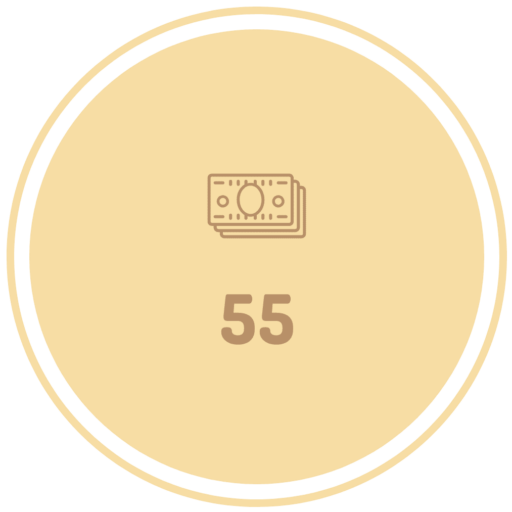1. How to Track Spending Without Stress
Why Tracking Spending Doesn’t Have to Be a Chore
Let’s be honest: the idea of tracking your spending can sound about as exciting as watching paint dry. But here’s the thing — it doesn’t have to be boring, and it certainly doesn’t have to be stressful. Think of it as giving yourself a clear picture of where your money is going, like creating a little financial roadmap. Once you see the benefits, you’ll realize it’s worth a few minutes of your time. Plus, you might even find it empowering. Knowing exactly how much you’re spending and where it’s going can feel like you’re finally taking charge of your financial life.
Start Small and Keep It Simple
One of the best ways to ease into tracking your spending is to start small. You don’t need fancy tools or complicated spreadsheets right away. A simple notebook and pen can do wonders. Write down your daily expenses for a week—yes, every kopi and hawker stall meal counts. At the end of the week, look over your list. Seeing everything in one place can be surprisingly insightful. It’s not about judging yourself; it’s about getting a clear view. If you prefer digital solutions, apps like Seedly or Wally make tracking a breeze. They categorize your spending automatically and can even send you reminders.
Make It Fun (Yes, Really!)
Who says tracking your expenses has to be dull? Turn it into a fun, creative challenge. Set a goal, like reducing your unnecessary spending by 10% in a month. Celebrate small wins, like skipping that overpriced latte for a week or finding cheaper alternatives. You could also gamify the process. For example, assign points for every day you stick to your tracking routine and treat yourself when you reach a milestone. Not into points? No problem. Reward yourself with something simple, like a relaxing afternoon doing something you love.
Use Tools That Fit Your Lifestyle
There’s no one-size-fits-all solution when it comes to tracking spending. Find tools that match your lifestyle and comfort level. If you’re tech-savvy, try a budgeting app that links to your bank account and does all the heavy lifting. For example, Pocket Expense or Money Lover are great for seniors who want something straightforward and easy to navigate. If you’re not a fan of digital tools, printable spending trackers or a colorful planner can work just as well. The key is to pick something you’ll actually use, not something that’ll gather dust.
Build a Routine That Works for You
The best way to make tracking spending stress-free is to turn it into a habit. Pick a time of day when you’re relaxed and have a few minutes to spare. Maybe it’s after dinner, with your favorite TV show playing in the background. Review your expenses for the day and jot them down. Consistency is more important than perfection. If you miss a day, don’t sweat it. Just pick it back up the next day. Over time, it’ll become second nature, like brushing your teeth or checking your WhatsApp messages.
Learn to Spot Patterns
Once you’ve tracked your expenses for a few weeks, you’ll start noticing patterns. Maybe you’re spending more on dining out than you realized, or perhaps your utilities are higher than expected. Use these insights to make adjustments. If you’re overspending in one area, challenge yourself to cut back and redirect those funds towards savings or something more meaningful. Spotting patterns isn’t about limiting yourself; it’s about aligning your spending with your priorities.
Share the Experience
If tracking spending feels lonely, turn it into a group activity. Get your spouse, family, or friends involved. Sharing tips, tricks, and even funny stories about unexpected expenses can make the process more enjoyable. Plus, having a buddy can keep you accountable. You could even create a friendly competition to see who can save the most in a month. Sharing the journey makes it less of a task and more of a shared experience.
Celebrate Your Progress
Lastly, don’t forget to celebrate your progress. Tracking spending isn’t just about cutting costs; it’s about taking control of your finances and living the life you want. Whether you’ve saved a few dollars or uncovered areas to improve, every step forward is worth celebrating. Treat yourself (within reason, of course!) and remember that you’re setting yourself up for a financially secure future. You’ve got this!
2. Setting Realistic Monthly Budgets for Singapore’s Costs
Why a Monthly Budget Matters in Singapore
Living in Singapore comes with its own set of financial challenges. From daily essentials to occasional indulgences, expenses can add up quickly. That’s where a realistic monthly budget comes in handy. It’s not about depriving yourself; it’s about understanding your financial priorities. A good budget gives you peace of mind, letting you enjoy your hard-earned money while still saving for the future. Think of it as your personal financial GPS—guiding you toward your goals without veering off track.
Start by Knowing Your Essentials
The first step to setting a realistic budget is understanding your essential expenses. These are the non-negotiables like rent, utilities, groceries, and transportation. Sit down with your past bills and receipts to figure out your average monthly spending in each category. If you’re renting, remember that housing costs in Singapore can vary widely depending on location and amenities. For groceries, keep track of where you shop—is it the local wet market or the air-conditioned aisles of Cold Storage? Knowing your essentials gives you a clear baseline to build your budget.
Factor in the Fun Stuff
A budget without room for fun is like a cake without frosting—just plain boring. Make sure you allocate some money for the things you love, whether it’s dining out, catching the latest blockbuster, or treating yourself to a weekend staycation. Singapore has plenty of affordable options, from hawker center feasts to free outdoor events. The key is moderation. Decide how much you want to spend on leisure activities each month and stick to it. This way, you can enjoy life’s little pleasures without feeling guilty.
Account for Unexpected Expenses
Life loves to throw surprises, and unfortunately, some of them come with a price tag. Think about medical bills, car repairs, or even last-minute birthday gifts. To stay prepared, set aside a small portion of your budget for unexpected expenses. This is your financial safety net. You don’t have to go overboard—even $100 to $200 a month can make a big difference. Over time, you’ll build a cushion that keeps you from dipping into your savings when surprises pop up.
Make Adjustments as You Go
A budget isn’t set in stone, especially in a dynamic place like Singapore. Prices change, priorities shift, and life evolves. Review your budget every few months to see if it still fits your needs. Maybe you’ve found a new favorite hawker stall that’s easier on your wallet, or perhaps your utility bills have crept up during the hotter months. Adjusting your budget ensures it stays relevant and works for you, not against you.
Tools to Simplify Your Budgeting
Why do everything manually when there are so many tools available to help you budget? Apps like Seedly and Wallet let you track your expenses and categorize them easily. Some even sync with your bank accounts for seamless tracking. If you’re more old-school, a simple Excel sheet or even a notebook works just as well. The important thing is to choose a method you’ll actually use. Consistency is key, so pick what feels intuitive and enjoyable.
Avoid Overcomplicating Your Budget
When it comes to budgeting, simple is better. Resist the urge to create 20 different categories or track every single cent. Focus on the big picture: your essentials, your fun, and your savings. The more complicated you make it, the harder it’ll be to stick with. A straightforward budget is like a good laksa—balanced, satisfying, and not overly fussy.
Celebrate Small Wins
Every time you stick to your budget, you’re taking a step closer to financial freedom. Celebrate those wins, no matter how small they seem. Maybe you saved $50 by cutting back on delivery orders this month, or you stuck to your grocery budget for the first time. Reward yourself with something that doesn’t break the bank, like a homemade dessert or a relaxing evening at home. Recognizing your progress keeps you motivated to continue.
Your Budget, Your Rules
At the end of the day, your budget is personal. What works for someone else might not work for you, and that’s okay. Tailor your budget to fit your lifestyle, goals, and personality. Whether you’re a planner who loves details or someone who prefers a broad overview, there’s a budgeting style for you. The most important thing is to start. Once you do, you’ll find that managing your money isn’t just possible—it’s empowering.


